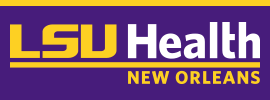Event Website
https://publichealth.lsuhsc.edu/honorsday/2022/
Start Date
2-4-2024 9:00 AM
Description
Accounting for an estimated 13-18% of mortality in people living with HIV (PLWH), liver disease is one of the leading causes of non-AIDS-related death. This is partly due to PLWH having increased alcohol use, a demonstrated liver disease predictor. However, this may be further exacerbated by other hepatotoxic lifestyle factors such as increased dietary sugar and fat intake. This cross-sectional analysis of New Orleans Alcohol use in HIV (NOAH) Study data aimed to assess whether sugar and fat intake are effect modifiers in the association between alcohol use and liver injury. Alcohol use was measured by the biomarker phosphatidylethanol (PEth; positive value: ≥20 ng/ml). Sugar and fat intake were assessed through 24-hour dietary recall. Liver injury markers included aspartate and alanine aminotransferase (AST; ALT), AST/platelet-ratio index (APRI; abnormal: >0.4), and fibrosis-4 (FIB-4) (abnormal: >1.45). Analyses included 231 PLWH (65.4% men, 83.3% Black, mean age 49.19±9.94). After adjusting for age, sex, and race, a positive PEth value was associated with overall increased mean AST (β=7.81, p=0.040), ALT (β=9.84, p=0.039), and APRI (β=0.13, p=0.028) and a 100-unit increase in PEth was associated with a 22% increase in the odds of an abnormal APRI or FIB-4 score (p=0.029). A significant negative interaction (β=-0.24, p=0.031) between alcohol use and sugar intake indicated that the main effects of these predictors were decreased with both present. In contrast, the positive interaction (β=0.18, p=0.095) between alcohol use and fat intake indicated an additive effect on APRI. In this cohort of PLWH, alcohol use was associated with multiple liver injury markers and these associations were modified by sugar and fat intake. Further research to identify the complex interactions of lifestyle behaviors and biological pathways that lead to liver disease among PLWH is warranted that will inform effective interventions to decrease disease burden.
Recommended Citation
Rosen, Erika M.; Simon, Liz A.; Welsh, David A.; Molina, Patricia E.; and Ferguson, Tekeda F., "Alcohol use and Liver Injury in PLWH: Sugar and Fat Intake as Effect Modifiers" (2024). School of Public Health Delta Omega Honors Day Poster Sessions. 7.
https://digitalscholar.lsuhsc.edu/dohd/2022/2022/7
Alcohol use and Liver Injury in PLWH: Sugar and Fat Intake as Effect Modifiers
Accounting for an estimated 13-18% of mortality in people living with HIV (PLWH), liver disease is one of the leading causes of non-AIDS-related death. This is partly due to PLWH having increased alcohol use, a demonstrated liver disease predictor. However, this may be further exacerbated by other hepatotoxic lifestyle factors such as increased dietary sugar and fat intake. This cross-sectional analysis of New Orleans Alcohol use in HIV (NOAH) Study data aimed to assess whether sugar and fat intake are effect modifiers in the association between alcohol use and liver injury. Alcohol use was measured by the biomarker phosphatidylethanol (PEth; positive value: ≥20 ng/ml). Sugar and fat intake were assessed through 24-hour dietary recall. Liver injury markers included aspartate and alanine aminotransferase (AST; ALT), AST/platelet-ratio index (APRI; abnormal: >0.4), and fibrosis-4 (FIB-4) (abnormal: >1.45). Analyses included 231 PLWH (65.4% men, 83.3% Black, mean age 49.19±9.94). After adjusting for age, sex, and race, a positive PEth value was associated with overall increased mean AST (β=7.81, p=0.040), ALT (β=9.84, p=0.039), and APRI (β=0.13, p=0.028) and a 100-unit increase in PEth was associated with a 22% increase in the odds of an abnormal APRI or FIB-4 score (p=0.029). A significant negative interaction (β=-0.24, p=0.031) between alcohol use and sugar intake indicated that the main effects of these predictors were decreased with both present. In contrast, the positive interaction (β=0.18, p=0.095) between alcohol use and fat intake indicated an additive effect on APRI. In this cohort of PLWH, alcohol use was associated with multiple liver injury markers and these associations were modified by sugar and fat intake. Further research to identify the complex interactions of lifestyle behaviors and biological pathways that lead to liver disease among PLWH is warranted that will inform effective interventions to decrease disease burden.
https://digitalscholar.lsuhsc.edu/dohd/2022/2022/7

